SUMMARY
This is AI generated summarization, which may have errors. For context, always refer to the full article.


PART 1 | How Cebu City almost became the Philippines’ coronavirus epicenter
In the month of June, all eyes were on the surge of cases in Cebu.
“Cebu has been affected with an alarming surge of new cases. We are experiencing an acceleration phase amidst an exhausted and overwhelmed health system,” the Cebu Medical Society said in a June 16 statement.
By June 22, the emerging hot spot caught the attention of President Rodrigo Duterte himself. Duterte, however, did not blame the local government officials directly, but the Cebuanos themselves.
“I will visit you. When I get there, I will be frank with you again because you are hardheaded. I didn’t want to say this. I even asked Bong [Go], ‘Should I tell them?’ Because this is not the first time that this happened. This is not the first time. This is not the first national emergency na ang Cebuano is murag – murag pandali – hili – hinay kaayo ang kuwan. Hinay mulihok. Unya og mulihok, magyawyaw pa kay ang Cebuano suberbiyo,” the President said.
(This is not the first national emergency that the Cebuanos were slow to respond to. And when they start to work, they will complain because Cebuanos are extra stubborn.)
On this same evening, he put Cebu under the strictest quarantine – ECQ – once again.
But how bad did it get while Cebu was under GCQ? According to the IATF, the situation at the city’s healthcare systems was this:
- Hospitals at full capacity for COVID-19 patients
- 45% of 60 mechanical ventilators in use
- All intensive care unit beds in use
- 90% of the 399 isolation beds occupied
- 93% of the 133 ward beds in hospitals occupied
When Mayor Edgar Labella was questioned about it, he stood by his recommendation despite the data showing the situation in the city was grim.
“Data show Cebu City should be under GCQ,” Cebu City Mayor Edgar Labella said in a statement on Wednesday afternoon, June 17.
“The report on critical utilization rate, which showed a high percentage of hospital bed occupancy, also did not include isolation facilities established and equipped by the city in cooperation with the private sector,” the mayor pointed out.
The first week of the reimposition of ECQ, the city counted almost 1,000 cases in the span of the week.
In addition to putting the city under strict quarantine, he sent Environment Secretary Roy Cimatu, a retired general, to oversee COVID-19 response in the city.
While the President did not directly criticize local officials for their handling of the virus, it was the first time the national government had directly intervened in local government affairs since the pandemic began.
Send in the generals
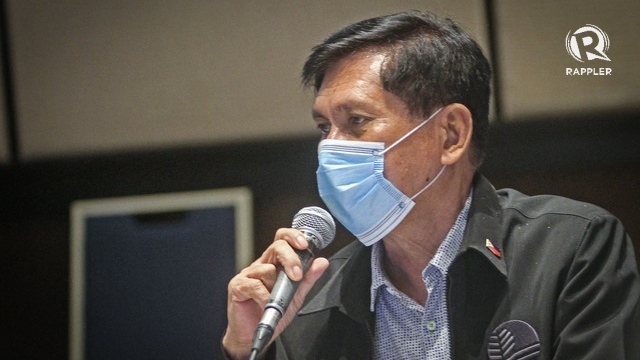
Alongside Cimatu, Retired General Mel Feliciano was sent to assist in directing the local response to the health crisis .
The general’s first marching orders – effective immediately – were to revoke quarantine passes, as he said there were too many people crowding public spaces and supermarkets. Then he ordered more lockdowns of barangays with the most cases.
Based on the numbers released by Cimatu, it seemed the barangays with the highest number of cases were no longer just in the urban poor neighborhoods, but in the medium-density, middle class barangays, too.
These barangays included:
- Sambag Dos
- Kamputhaw
- Sambag Uno
- Basak San Nicolas
- Mabolo
- Guadalupe
- Lahug
- Duljo
- Tinago
- Tisa
- Ermita
- Tejero
The city also saw an increased presence of military and police, who came in from all across the Philippines to help enforce the lockdown.
At least 150 more cops from other regions in the country, including an undisclosed number of Special Action Force (SAF) troopers, were posted here for the lockdown.
But the most substantial and enduring actions Cimatu and Feliciano took were empowering the city’s emergency operations center (EOC), headed by Cebu City Councilor Joel Garganera, in tightening response to the pandemic. They also ordered the Cebu City government and Central Visayas’ Department of Health (DOH) to reconcile their data and follow the format of the national DOH.
According to a source who was in one of Cimatu’s first meetings, he was visibly frustrated with the disparity in numbers between the two agencies. Prior to Cimatu’s arrival, there were discrepancies of up to 20 for newly-reported cases and confirmed deaths. When asked for an explanation, agency heads did not have a direct answer.
Within two weeks of that meeting, the DOH-7 changed its daily reports once again to align with the national government’s format and has been consistent with its comprehensive data releases since.
According to the IATF’s initial assessment of why the cases were rising, the relaxed enforcement of quarantine restrictions, as well as allowing suspected and confirmed cases to quarantine at home, allowed the spread of the virus within the household and in the neighborhoods.
Local officials also scrambled to add COVID-19 beds and more capacity to the isolation centers.
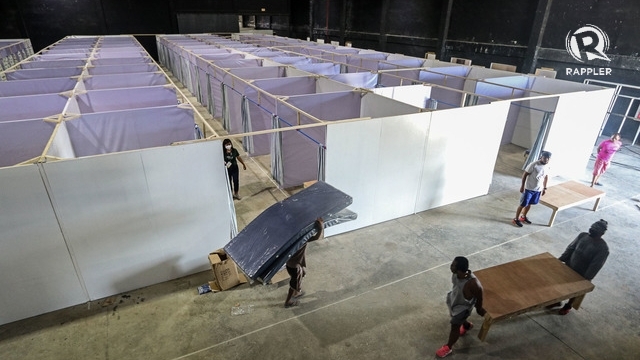
By August 15, according to the OCTA research group, the number of new cases dropped significantly in this period.
It was also the first time, they said, that Cebu had flattened its curve of new coronavirus infections. This was also the first time they had said this about any Philippine city they’ve been keeping track since the outbreak began.
From 294 new cases reported between July 5 to 7, the number dropped to 267 cases from July 12 to 18, then down to 189 cases between July 26 and August 1.
The replication rate (R0) also dropped below 1. This means the spread of the virus had slowed down to an average of a patient infecting less than one other person, from a previous high of infecting two others.
Its positivity rate (the number of patients testing positive) also dropped to below 5% by mid-August from the previous high of 30% at the end of June.
So how did things turn around?
How the curve flattened
“It came to a point where there were a lot of cases in Cebu, but they responded with a proactive approach. MECQ (modified enhanced community quarantine) for 4 weeks really gave a breather to the province’s health sector and government, which they used appropriately,” Peter Julian Cayton, an associate professor at the University of the Philippines (UP) School of Statistics and a member of the UP COVID-19 Pandemic Response Team, told Rappler in a previous interview.
Cayton said that because Cebu had a longer and stricter quarantine, the lockdown had a greater impact here than in other areas who eased restrictions too quickly.
But two months into GCQ and MGCQ, the least restrictive quarantine, the number of new cases in Cebu City has continued to decline even further.
From over 10,000 active cases at the peak of the outbreak, there are only less than 400 active cases as of October 7.
On Monday, September 28, Cebu City had its lowest number of new cases reported with only 3 for the entire city. This has been a consistent trend in newly-reported cases even after the military overseers had already left the city in August.
The city has also been able to maintain these low numbers without even having to resort to barangay or sitio-level lockdowns.
The key, according to Garganera, was meticulous attention to detail in the management of the pandemic that made a difference.
The COVID-19 operations head said that key improvements enabling the continued containment of the contagion were the increased number of contact tracing teams and speeding up swab results. From only 5 contact tracing teams the city now has 423.
At the beginning of the outbreak, patients were waiting up to a week or more for their swab results, many of them not being monitored if they were following isolation. Now, results come back within one to 4 days.
Improving these areas, Garganera said, has helped keep Cebu City’s numbers down.
When patients are able to get their results faster and are moved to isolation facilities quicker, the exponential spread of the virus to more individuals is contained.
In July, Cebu City made RT-PCR swab testing free and available for any resident, whether or not they have symptoms.
While the turnaround was initiated by the retired generals, the EOC is also in constant coordination with local health experts and epidemiologists.
The city has likewise been able to keep its bed occupancy rates down. As of Monday, October 5, the bed occupancy rate in Cebu City’s critical care COVID-19 beds was at 26%, far below the danger zone of 70%.
These are good signs, but Garganera said improvements should not be a signal to become complacent and recognize that a “second wave” can happen anytime, which even better prepared countries like New Zealand and Vietnam have already experienced.
Taking a proactive and data-driven approach in finding vulnerable spots in the city would be key in preventing a second outbreak, the city councilor told Rappler.
Preventing a second wave
Based on data the COVID-19 response team gets from the contact tracers, they are able to see where coronavirus-positive residents have been during their period of infection.
On September 21, for example, the emergency operations team found that a majority of the new coronavirus infections – about 24% – had visited grocery stores and public markets.
A blind spot, Garganera said, were the aisles, where no one was checking whether or not customers were taking off their mandatory face masks and face shields.
“Security officers only check at the door, but once they get inside, customers often pull their face shield over their heads and face masks below their nose or even mouths,” he added.
Within the week, the EOC had already gathered all supermarket operators to discuss health and safety protocols in their establishments. They all agreed that a safety officer should be assigned to patrol the aisles and make sure that customers were wearing protective gears at all times.
As of this posting, the city is conducting pooled coronavirus testing – via tandem rapid antibody and RT-PCR swabbing – of vendors at the Carbon Market, the biggest public market in the city.
The center also asked business process outsourcing (BPO) companies allowed to operate in the city to assign health officers to monitor compliance within the office of the requirement to wear masks.
Health officers would be in direct contact with the city’s emergency operations in case employees of these offices test positive.
These actions were taken within the same week after assessing data collected from contact tracing.
These details may seem small, but the EOC said the city has learned its lesson that in a pandemic, the nitty-gritty matters.
Garganera said that while he’s confident and optimistic about their management of COVID-19 response now, he hopes the public would continue to cooperate by wearing masks and face shields, practicing physical distancing and hand washing. Because even though the curve remains flat, the city now knows that this can change quickly and there is little room for complacency when it comes to dealing with the COVID-19 pandemic.
“I hope people will try to discipline themselves. Looking at December, I would say COVID-19 will still be here but somehow we get to know him,” Garganera said.
“To me, COVID-19 has a face. The face is death.” – Rappler.com
Add a comment
How does this make you feel?
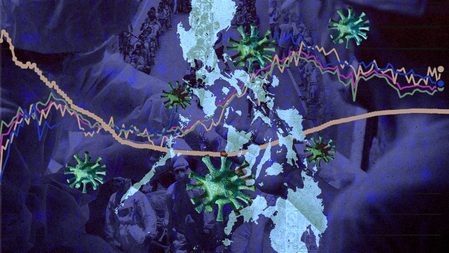
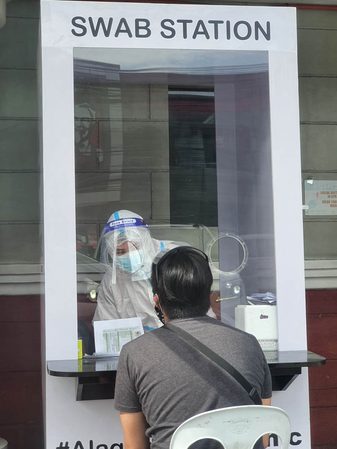
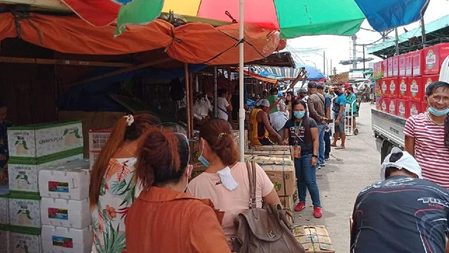





There are no comments yet. Add your comment to start the conversation.